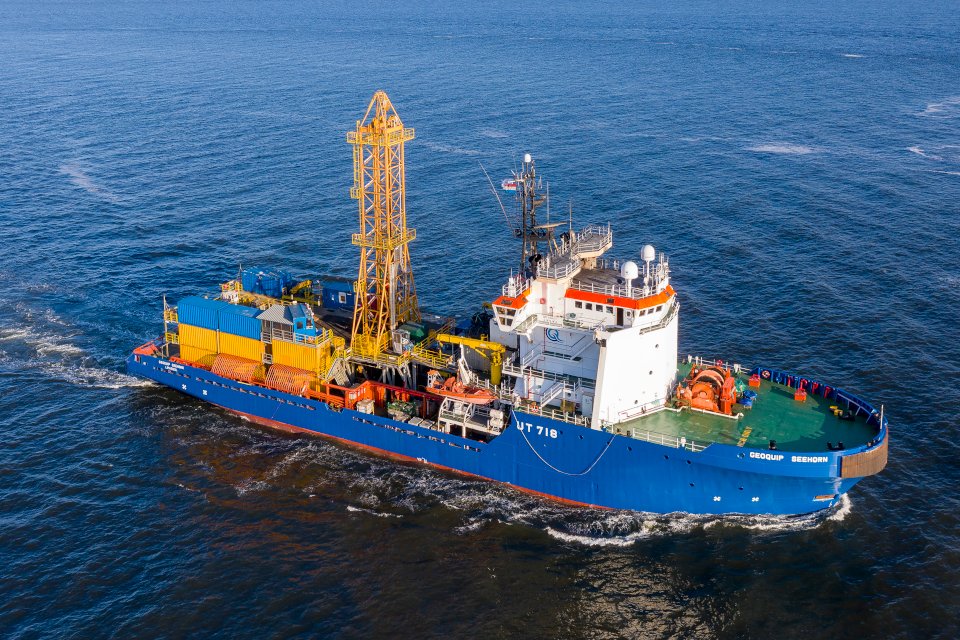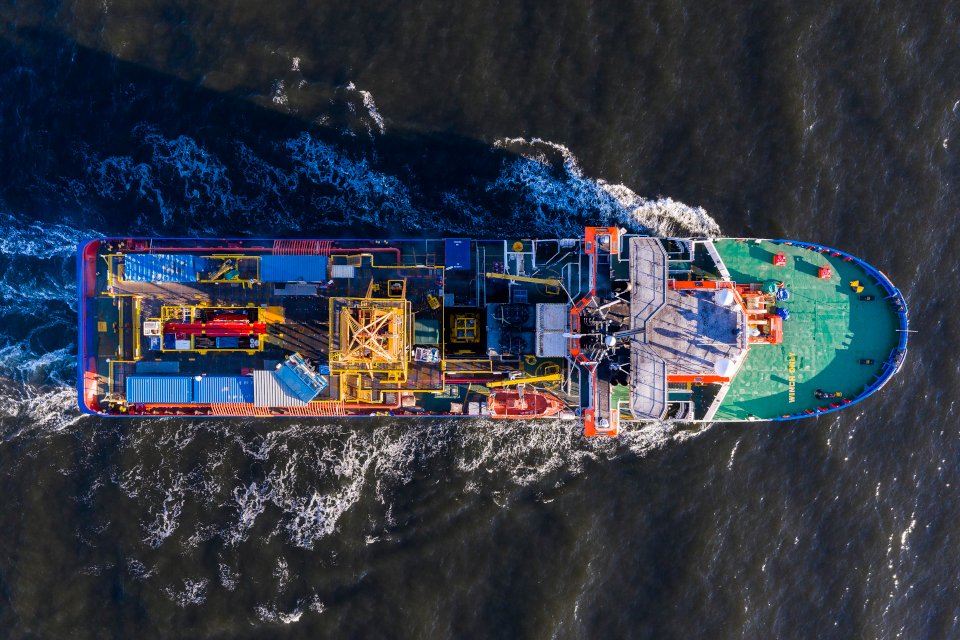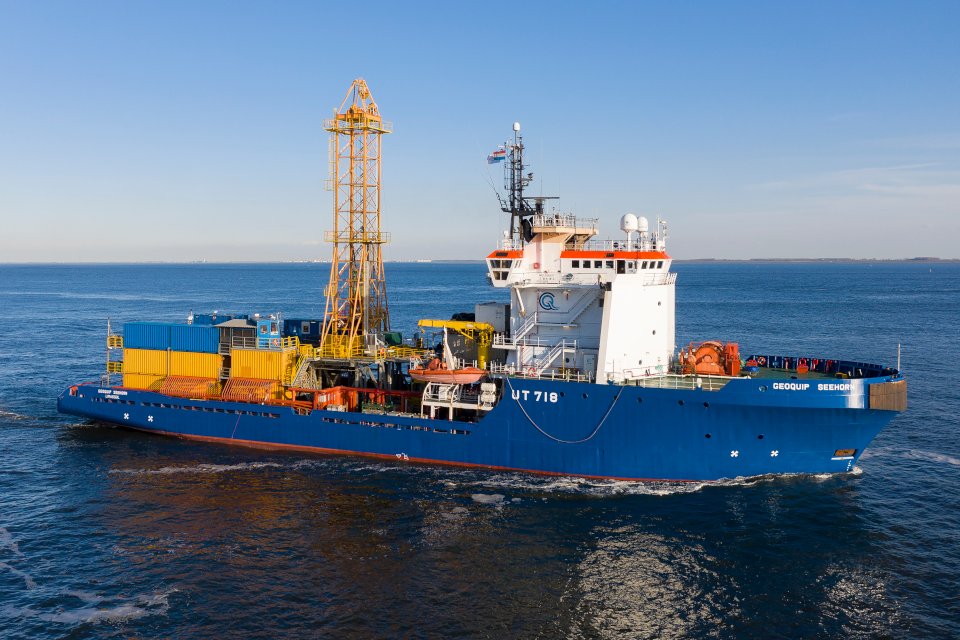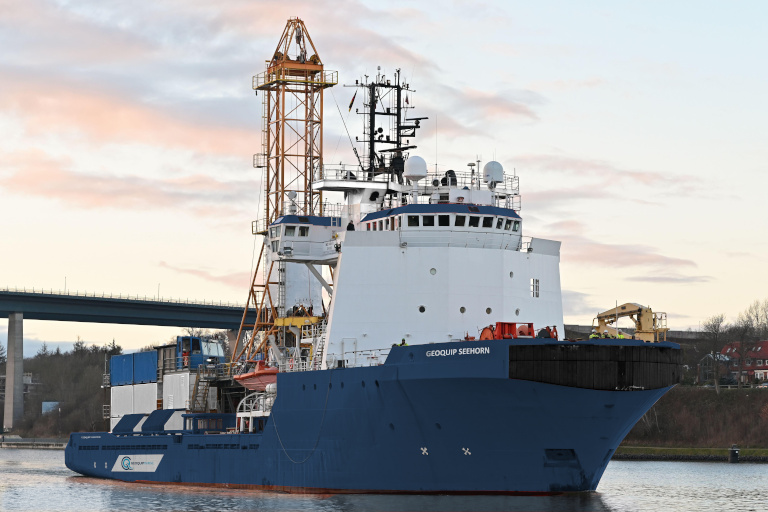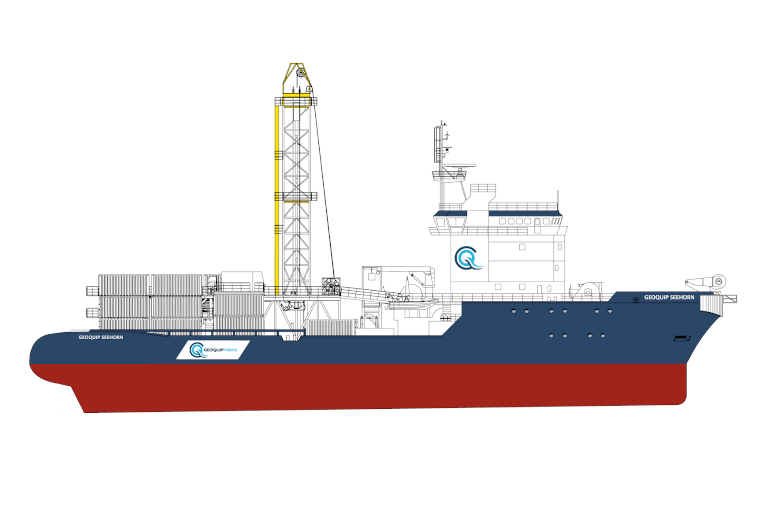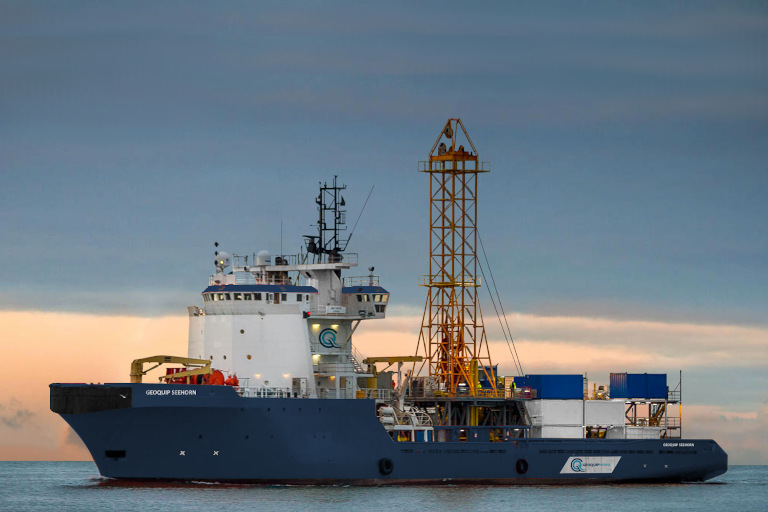GEOQUIP SEEHORN
GEOQUIP SEEHORN + GMR602
+ GMR602
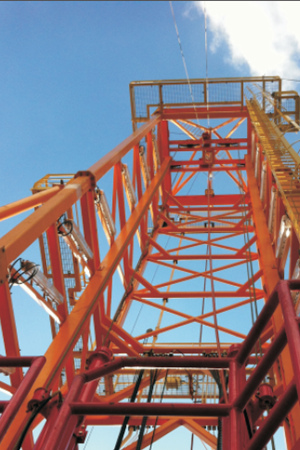
VERSATILE
GEOTECHNICAL VESSEL
The Geoquip Seehorn is a DP2 integrated geotechnical survey vessel (IGSV), converted in 2015 to be a geotechnical drilling vessel, ideally suited to safely completing large scale research projects which have a combination of seabed CPT and borehole locations. A dedicated launching mechanism offers a quick, smooth and safe switch between drilling mode and seabed CPT mode through the large moonpool.
With the added benefit of having this efficient system to change between seabed and downhole mode, as well as being capable of piggyback coring, the vessel is a truly versatile asset in our fleet.
ON-BOARD SYSTEMS
ON-BOARD SOIL LABORATORY
The Geoquip Seehorn has a dedicated soil and rock testing laboratory on-board. This enables our geotechnical engineers to classify recovered samples and determine the strength parameters of interpreted layers for design and analysis in ‘real-time’. This data allows our geotechnical engineers to perform spudcan penetration and/or pile capacity/installation engineering analyses on-board as the borehole progresses. This allows optimisation of the actual final borehole depth with savings in operational time and therefore cost.
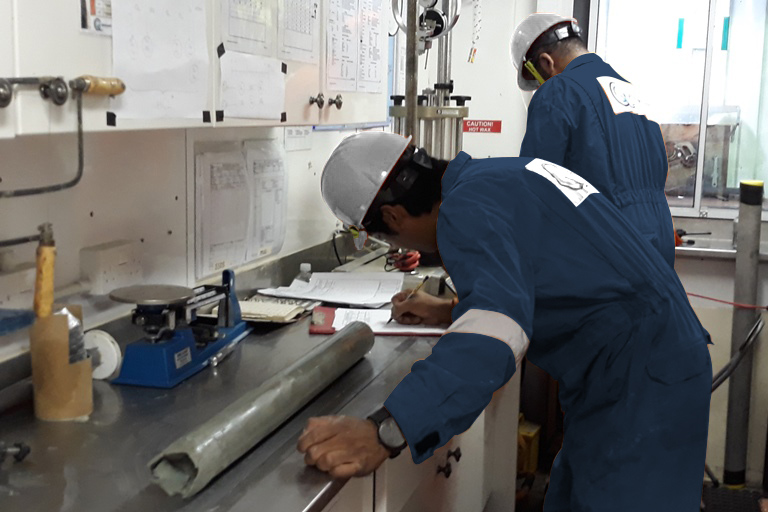
The laboratory is equipped with the necessary tools to conduct standard soil and rock tests.
Routine sample handling, photography, classification and storage are part of the everyday work process. The testing schedule of recovered samples can be tailored to your project and high quality samples can be retained in Shelby tubes when deemed beneficial to advanced onshore laboratory testing requirements.
Recovered samples are stored in a temperature-controlled environment prior to shipment to an onshore facility.
SEABED SYSTEMS
The Geoquip Seehorn can operate Geoquip Marine’s 20T deep push seabed unit to safely and efficiently conduct an array of in situ tests.
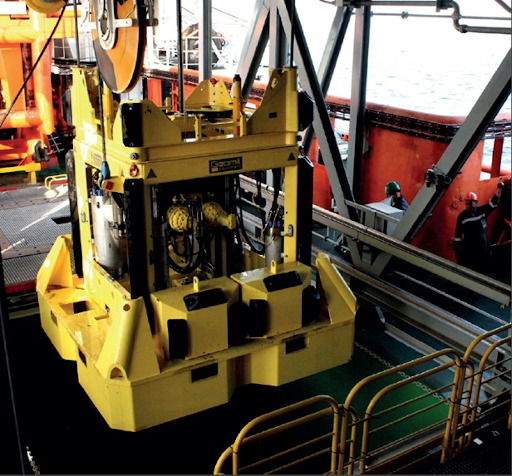
When your project requires in situ testing, in either shallow or deep water, our seabed unit can be quickly deployed offering shorter turnaround times of tests and therefore reducing costs. The seabed system is deployed through the vessel’s moonpool and uses the drill rig derrick and compensation system.


